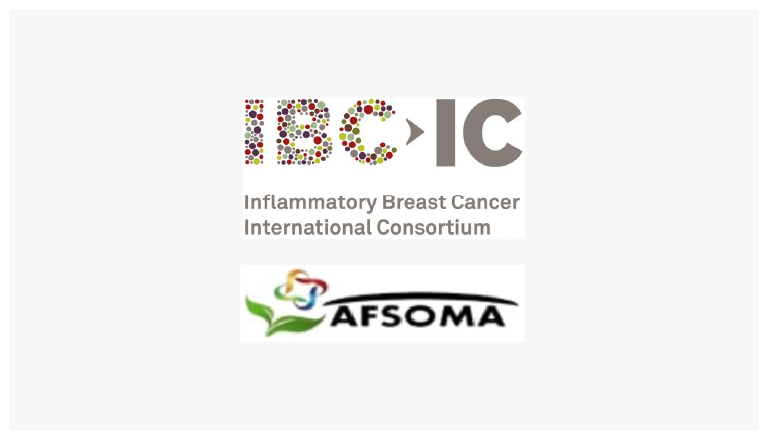2nd IBC-IC in Africa: Discover the Power of ScreenCell® Technology

Discover ScreenCell® Technology at the 2nd IBC-IC (Inflammatory Breast Cancer International Consortium) in Africa and the 8th Ariana’s OncoDay. These events will take place on May 9th and 10th, 2025, at the Carthage Thalasso Resort Hotel in Tunis, Tunisia.
ScreenCell at SIMEM 2025: Meet us on the Genethical® stand

ScreenCell will take part in the 27th edition of SIMEM 2025 alongside Genethical®, our exclusive partner in Algeria. This major event in the North African medical sector will be held from April 9 to 12, 2025, in Oran. A technology for precision oncology – Booth Z 35-36 Source : www.simem.info During your visit to the […]
ISMRC 2025: Join ScreenCell to Discover Our CTC Detection Method

We are excited to announce that ScreenCell will be attending the upcoming edition of the International Symposium on Minimal Residual Cancer (ISMRC), which will take place over three days from May 7 to 9, 2025, in Nice, France.
Circulating Tumor Cells from Surgical Manipulation Predict Recurrence and Poor Prognosis in Non-Small Cell Lung Cancer

Background/Objectives: In our previous multicenter prospective controlled study (UMIN000018602), we investigated the impact of surgical manipulation on circulating tumor cells (CTCs) in patients with non-small cell lung cancer (NSCLC). CTCs were detected after surgery in four patients (4/29, 13.8%), although CTCs were not present before surgery. These four patients had tumor cells leaked into their bloodstream by surgeons’ manipulation. We aimed to clarify long-term outcomes according to the presence of CTCs.
Methods: Patients with cT1b-2N0M0 NSCLC scheduled for lobectomy were enrolled, based on the selection criteria of a consolidation-to-ground-glass opacity ratio (over 50%). Peripheral blood samples (≥3 mL) were collected before surgery (for pre-CTCs), during surgery, and immediately after pulmonary vein dissection (for post-CTCs). CTCs were isolated from these samples using ScreenCell®’s size-selective method.
Results: From July 2015 to January 2016, 29 patients were enrolled, yielding paired pre- and post-CTC samples for all patients. Thirteen patients were pre-CTC positive, and post-CTCs were detected in 17 patients. Survival analysis revealed a statistically significant difference in recurrence-free survival between patients with and without post-CTCs (p = 0.043), while pre-CTCs status had no significant impact on recurrence (p = 0.226). Patients with post-CTCs had a significantly higher recurrence rate than those without (p = 0.043). Half of patients with post-CTCs but without pre-CTCs had recurrence within 5 years after surgery.
Conclusions: Post-CTCs emerged as a significant predictor of recurrence following lobectomy; however, it could be possible for thoracic surgeons to prevent recurrence by improving surgical techniques for NSCLC patients with post-CTCs but without pre-CTCs.
What Are Circulating Tumor Cells ?

Just like our footprints in the snow, cancer leaves a mark as it seeks to spread to other organs. These traces, visible in the blood, appear as Circulating Tumor Cells (CTCs), true indicators of its progression. Their detection and characterization could open new perspectives in the treatment of cancer patients and in personalized medicine.
🔬 CTCs in clinical routine: what concrete applications? Our CSO answers your question
Optimum diagnostic pathway and pathologic confirmation rate of early stage lung cancer: Results from the VIOLET randomised controlled trial

Background: Pathologic confirmation of lung cancer influences treatment selection for suspected early-stage lung cancer. High pre-treatment tissue confirmation rates are recommended. We sought to define management and outcomes of patients undergoing surgery for primary lung cancer in a UK multi-centre clinical trial.
Methods: VIOLET compared minimally invasive video-assisted thoracic surgery versus open surgery for known or suspected lung cancer. Diagnostic patient pathways were identified and methods of tissue confirmation were documented. The outcome of inappropriate lobectomy for benign disease or inappropriate wedge resection for primary lung cancer was compared with respect to the pathologic diagnosis.
Findings: From July 2015 to February 2019, 502 patients were randomised and underwent surgery; 262 (52%) had a pre-operative pathologic confirmed diagnosis of primary lung cancer, 205 did not have a pre-operative biopsy and 35 had a non-diagnostic pre-operative biopsy. Of the 240 participants without pre-operative pathologic confirmation of primary lung cancer, intraoperative biopsy and frozen section analysis was undertaken in 144 (60%). The remaining 96 underwent direct surgical resection without tissue confirmation (19% of the entire cohort). Confirmation of histologic diagnosis before surgery was less costly than diagnosis in the operating theatre. The inappropriate surgery rate was 3.6% (18/502 participants, 7 lobectomy for benign disease, 11 wedge resection for lung cancer).
Interpretation: Low levels of inappropriate resection can be achieved at pre-operative tissue confirmation rates of 50% through a combination of intra-operative confirmatory biopsy and correct risk estimation of lung cancer. Practice needs to be monitored to ensure acceptable levels are consistently achieved.
Rapid separation of mononuclear hodgkin from multinuclear reed-sternberg cells
We describe a method to isolate small mononucleated Hodgkin (H) cells from multinucleated Reed Sternberg (RS) cells of Hodgkin lymphoma using the ScreenCell filter device. This filtration-based approach lends itself to future clinical applications in that it enables the separation of H and RS cells from lymph node biopsies, bone marrow aspirates, pleural effusions, and blood, including the isolation of monoclonal Hodgkin precursor cells from the blood.